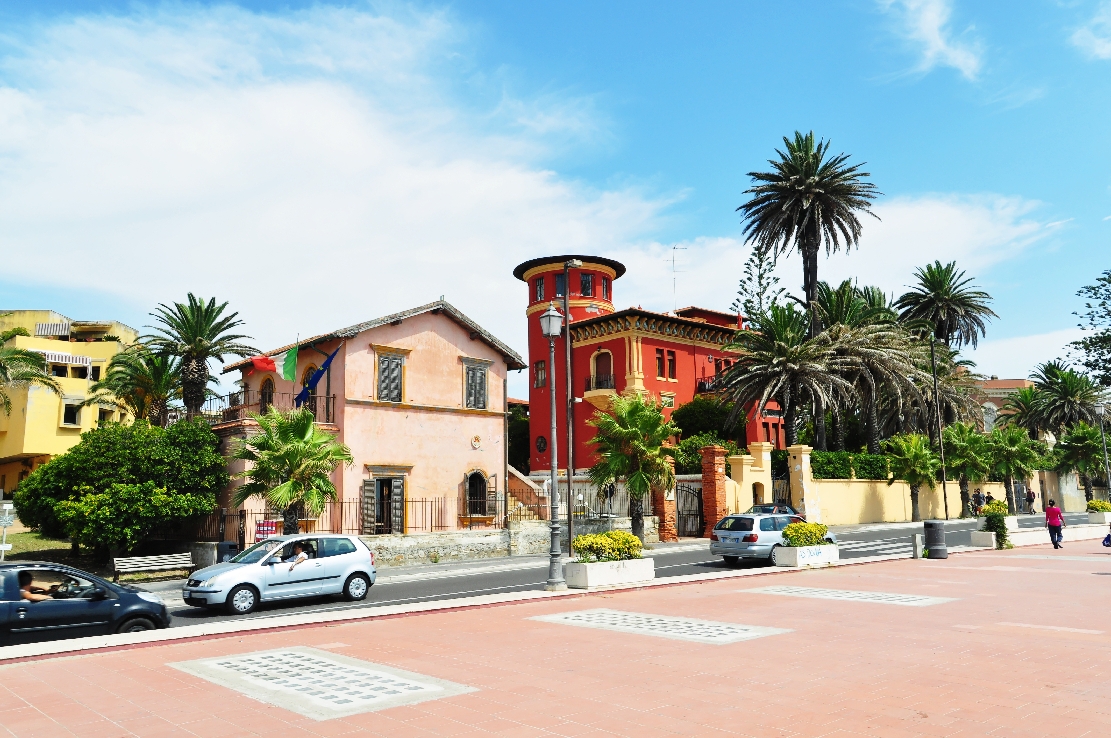According to some, the promontory of Capo Linaro, located in the municipal territory, constitutes the southern limit of the Maremma, in reality a part of what was once Etruria – a region which it reached the right bank of the Tiber – with the Roman expansion it was called Ager Romanus, today Agro Romano. The municipal territory of Santa Marinella also includes the southern offshoots of the Tolfa mountains and the Marangone torrent, which marks the border with Civitavecchia.
Ancient History
In the area of Santa Marinella, ancient sites inhabited in the ancient Neolithic and in the Bronze Age have been identified. Starting from the 9th century BC. the settlement of Punicum, the settlement of Pyrgi (now Santa Severa), probable Phoenician emporiums, and finally the Roman settlement of Castrum Novum arose in the area.
Under the Papal States
In 1777 the papal government commissioned Gaetano Torraca to carry out excavations from which the town of Castrum Novum and the Etruscan necropolis of Castellina del Marangone emerged. In the Middle Ages, the coast of Santa Marinella became a possession of the lords of Vico, then of the Anguillaras and finally of the Orsinis. Among the coastal defense towers built by Pope Pius V in 1567, there is the tower which was called Santa Marinella, after the small inhabited centre, which was reborn there for the cultivation of fields and pastures.
In 1899 the Marquis Sacchetti bought the old post office and, during the works for the planting of some pine trees, he discovered the remains of a luxurious Roman villa with strong>statues that will go to some museums around the world.
On 4 October 1949 Santa Marinella and Santa Severa detached from Civitavecchia becoming an independent municipality. In 1955 the architect Luigi Moretti, designer of the famous Hotel Watergate in Washington, designed, on behalf of Princess Pignatelli, the complex of three villas called La Saracena, La Califfa and La Moresca. In the fifties, sixties and seventies, Santa Marinella became the “Pearl of the Tyrrhenian”, sometimes also called the “Pearl of VIPs”, the summer destination par excellence for “Roma Bene”.
Castello Odescalchi
The castle stands on the foundations of an ancient Roman villa, property of the jurisconsult Ulpiano; in the 12th century the Norman tower, which still exists, was erected in order to protect the coast from pirate raids and in the 16th century, the watchtower was surrounded by high enclosure walls connected by several circular turrets.
During the pontificate of Pope Urban VIII, the castle came into the possession of the Barberini family, who undertook expansion and accommodation works; only in 1887 did the castle become the property of Prince Baldassarre Odescalchi, ancestor of the current owners.
Natural areas
-In 2005 the seabed in front of Santa Marinella were indicated as a site of community interest.
-Macchiatonda nature reserve. The coast of Santa Marinella has dense halophilous vegetation; in fact halophytes are plants that grow on soils with a high saline concentration, near the shoreline.
Some of the floristic species present in this belt are: Limbarda crithmoides, Salsola soda, Atriplex portulacoides, Limonium narbonensis, Plantago coronopus.
Particular of the town is the presence of Cressa cretica, of the Convolvulaceae family, present only in four Italian regions, reported as a species at risk of extinction in the regional and national red lists.
Tourism
Santa Marinella is called by many the pearl of the Tyrrhenian Sea, above all thanks to its particular position on the sea and the climate, characteristics that make it a city truly predisposed to tourism. In addition to the numerous archaeological sites present in its hinterland and on the coast and the numerous bathing establishments, Santa Marinella boasts an efficient municipal library, two public sports and recreational facilities, such as a small football stadium and an amphitheater at the covered, and a private facility equipped with a restaurant, bar, tennis courts, five-a-side football and bridge courts. There is also an open-air cinema that works in the summer months and various public and private parks equipped with numerous games for children and other services.



